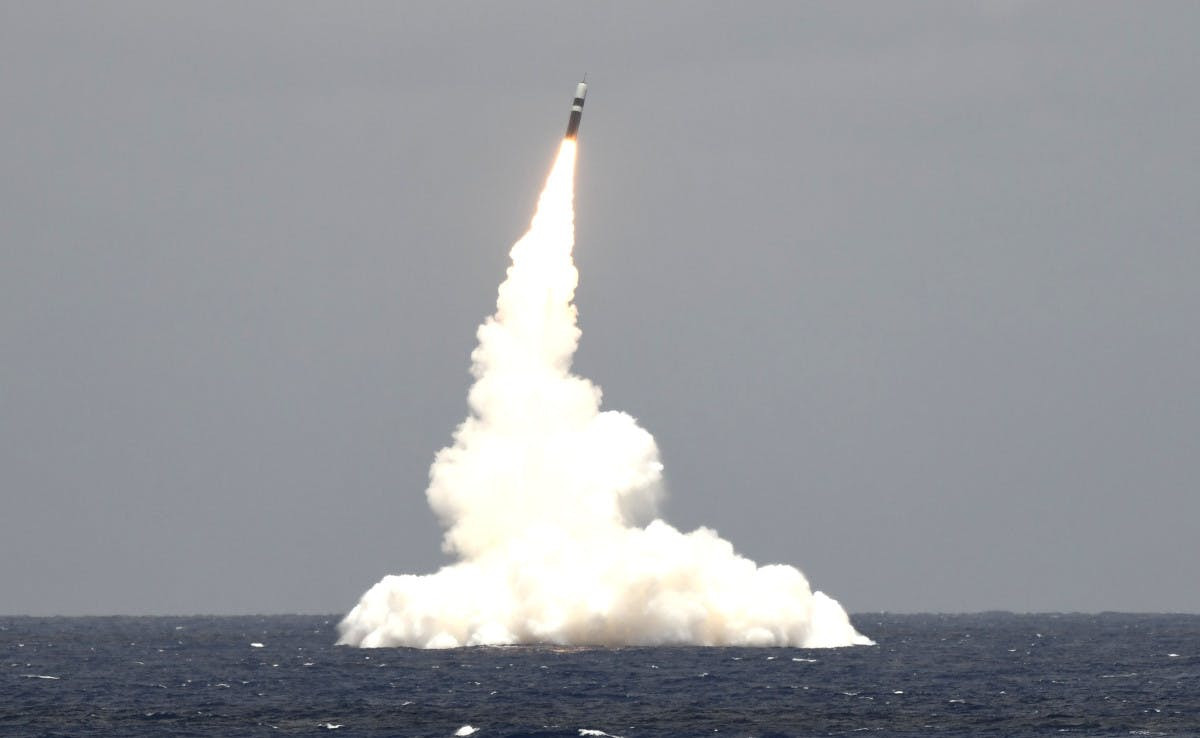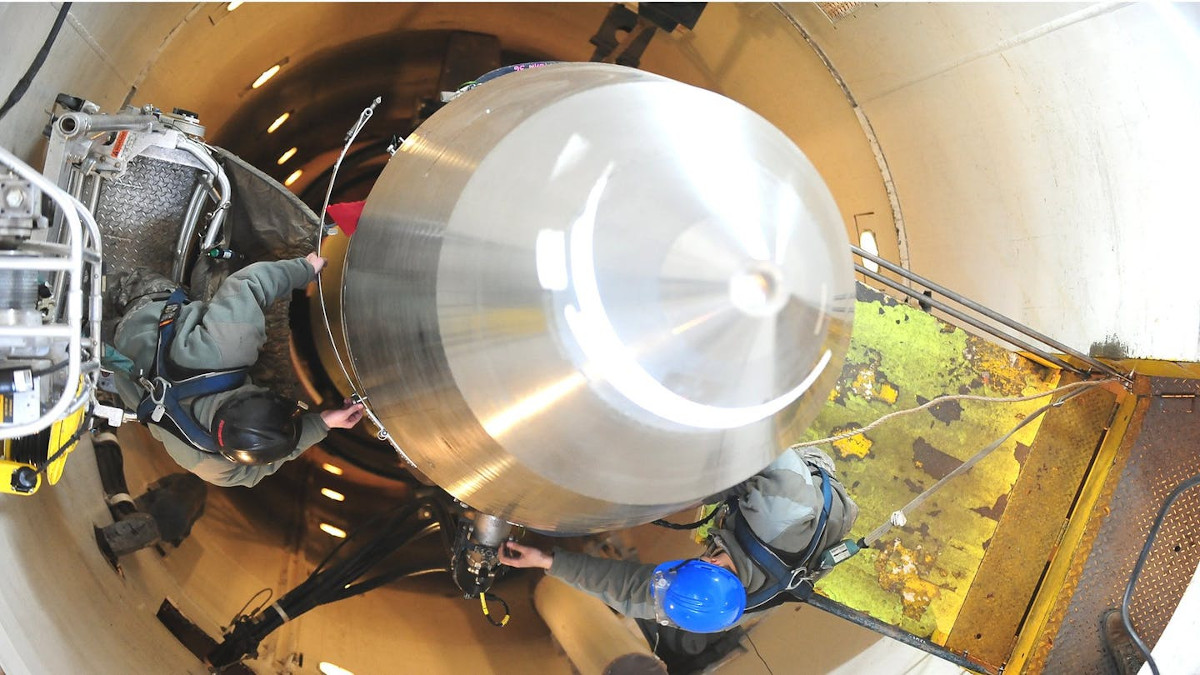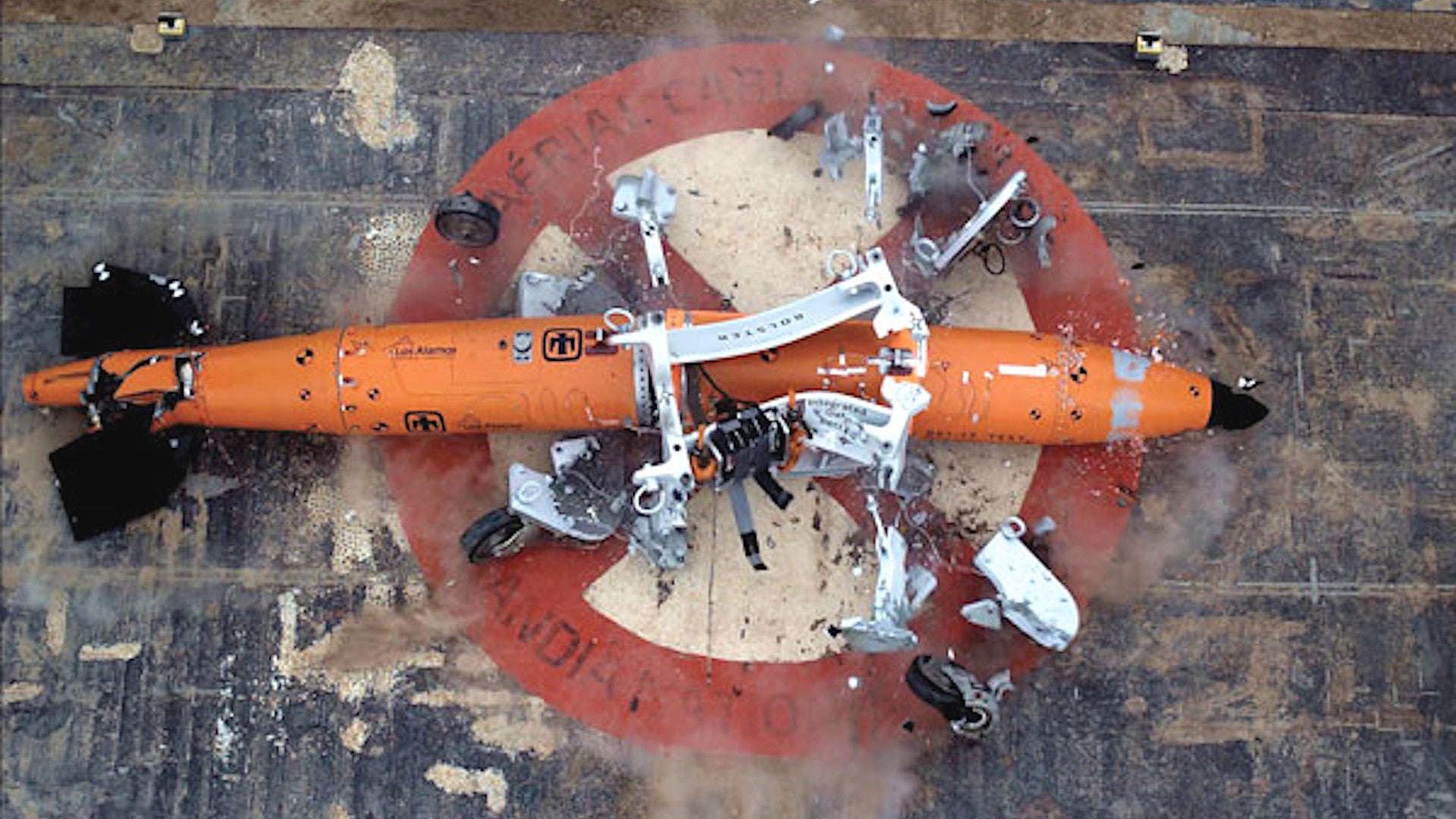Concerns about the reliability of commercial-off-the-shelf capacitors, each of which cost just $5, the Department of Energy had been planning to use in two future nuclear warhead designs will delay both programs by at least a year and a half and could result in up to a whopping $850 million in additional costs. The W88 ALT 370 warheads for the U.S. Navy’s Trident D5 submarine-launch ballistics missiles and the U.S. Air Force B61-12 nuclear gravity bombs, the latter of which are already set to be worth literally twice their weight in gold
each, are seeing impacts from the decision to switch to a more robust piece of circuitry.
Charles Verdon, the Deputy Administrator for Defense Programs at the National Nuclear Security Administration (NNSA), informed members of Congress of the issue during a hearing on Sept. 25, 2019. NNSA oversees the development, construction, and dismantlement of U.S. nuclear weapons. The W88 ALT 370 is an upgrade for existing W88 warheads that reportedly consists of improved arming, fuzing, and firing components. The B61-12 is a modernized variant of the B61 family of nuclear gravity bombs that leverages warheads from older B61-4 bombs and various components from those weapons, as well as from B61-3s, -7s, and -10s. It also adds a precision guidance tail kit. The B61-12s, which you can read about in much more detail in this past War Zone feature, will replace these older B61s, and potentially other nuclear bombs.
The W88 ALT 370 and B61-12 designs both used the same commercial capacitors in an effort to help control costs. Verdon insisted to legislators that there was no indication that these components would fail under normal circumstances.

“Early tests on the capacitors now in question and subsequent tests including component, major assembly, and full-up integrated system flight tests demonstrated that these components meet requirement today,” Verdon told lawmakers. “Industry best practices were used to stress the components beyond their design planned usage as a way to establish confidence that they will continue to work over the necessary lifetime of the warhead. During stress testing, a few of these commercially available capacitors did not meet the reliability requirements.”
This, in turn, shook NNSA’s confidence that all of the capacitors would be able to work reliably across the expected life cycles of the W88 ALT 370s and B61-12s. These weapons are expected to remain in the active stockpile for at least between 20 and 30 years after they enter service. The U.S. Air Force had hoped to receive its first examples of the B61-12 next year. It’s unclear when the Navy might have originally expected to start getting the W88 ALT 370s, but NNSA had planned to finish construction of the first of these upgraded warheads by the end of this year.
NNSA is now replacing the $5 capacitors with new, more robust ones that cost around $75 each. Verdon said that this could add between $120 and $150 million to the total cost of the W88 ALT 370 program and between $600 and $700 million to the B61-12 effort. He warned that the combined costs could potentially rise to more than a billion, depending on how the process goes. Each of these programs is now facing its own schedule delay of between 18 and 20 months, as a result.

The W88 ALT 370 program’s total estimated cost is already around $2.7 billion. The total price tag for the B61-12 bombs is around $8.25 billion, with another $1.1 billion for the new precision guidance tail kits.
“What we didn’t recognize, and one of the lessons we’ve learned, is the variability [in quality control] that can exist even within a given vendor just between different lots,” Verdon explained. “If you buy components and get different lots, there can be variability in how they are produced.”
NNSA is now separately reviewing its procedures for acquiring and inspecting commercial-of-the-shelf components and is in discussions with vendors about ways to obtain more consistent quality in parts destined for nuclear weapons. “We’re going to look at it on a part-by-part basis. For those parts vendors that will have a hard time [meeting the requirements], we would look to bring those back in house,” he added, referring to the more costly option of the U.S. government re-taking responsibility for custom building certain components.
Verdon also told legislators that NNSA had been able to leverage its experiences with the W88 ALT 370 and B61-12 programs to produce “design simplifications” on the future W80-4 and W87-1 warheads. The W80-4 is a life-extension upgrade for existing W80s found in the Air Force’s AGM-86B Air Launched Cruise Missiles (ALCM) and it will also be used in the service’s future air-launched Long Range Stand Off (LRSO) cruise missiles. The W87-1 is a similar effort for W87 warheads, which are presently found on some Air Force LGM-30G Minuteman intercontinental ballistic missiles (ICBM) and are set to go atop the future Ground Based Strategic Deterrent (GBSD) ICBMs. NNSA hopes this will lead to new cost savings that will help offset the issues with the W88 ALT 370s and B61-12s.

Unfortunately, when it comes to nuclear weapons, any cost savings have to be balanced against the absolute need for the best possible safety and surety features. With America’s nuclear enterprise, this is called the concept of “Always/Never,” which refers to the desire for nuclear weapons to always function when you want them to and never when you don’t.
Design flaws with multiple nuclear weapon configurations meant a number of already harrowing accidents during the Cold War could have been particularly catastrophic. One of these incidents, a 1980 fire in the engine of a B-52 loaded with nuclear weapons sitting on alert at Grand Forks Air Force Base in North Dakota, was one turn of the wind away from becoming “worse than Chernobyl,” according to Dr. Roger Batzel, then-director of the Department of Energy’s Lawrence Livermore National Laboratory, or LLNL. You can read more about this particular accident in this recent War Zone feature.
For the time being, the capacitor issue has not had any larger impacts on the futures of W88 ALT 370 or B61-12 programs. However, “there are vitally important programs for America, but there are no sacred cows, so we need to make sure 18-month, two year delays, cost overruns can be better understood so they can be avoided in the future,” Representative Jim Cooper, a Democrat from Tennessee and Chair of the House Armed Forces Committee’s Strategic Forces Subcommittee, warned during the hearing.
Congress is already engaged in an intense debate about modernizing America’s nuclear arsenal, broadly, which is expected to cost a whopping $1.5 trillion over the next three decades. As such, it is very possible that we will see additional changes to the character of both the W88 ALT 370 and B61-12 programs now that their schedules for both have grown by more than a year.
Contact the author: joe@thedrive.com
